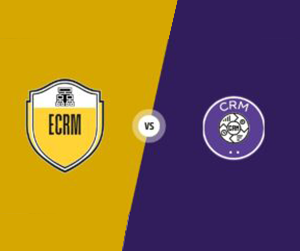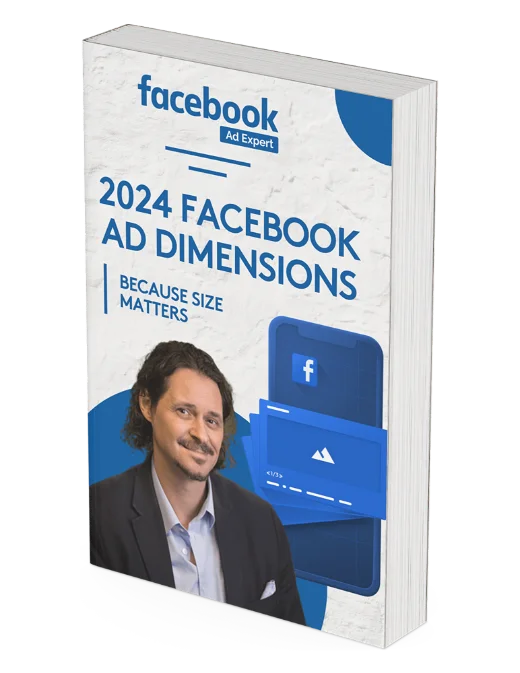We’ve done all the hard work for you. We’ve sifted through our treasure trove of Facebook ad tips and picked out the absolute best ones. These are like the shiniest diamonds in a treasure chest, the cream of the crop. Think of this blog as your go-to guide for Facebook ads. Each tip is super helpful and connects you to detailed resources on how to use it in your Facebook ad strategy.
Ready to take action? You bet! Let’s dive in and get started!
Step #1: Craft an Amazing Experience with Facebook Canvas Ads
If you’ve ever watched demos of Facebook Canvas Ads, you might have been intrigued by their capabilities but put off by what seems like a complex creation process. Canvas ads combine videos, images, text, calls to action, and interactive elements, creating a rich multimedia experience. But is the time investment worth the final result?
The numbers suggest it is.
When executed effectively, Canvas ads can captivate your audience. Approximately 53% of users who open a Canvas ad engage with at least half of its content, with an impressive average view time of 31 seconds per ad. Why? The ability to blend various ad formats (carousel ads, video ads, single image ads, etc.) empowers you to tell a compelling brand story and immerse users in your brand experience like never before.

The process of crafting Canvas ads is remarkably straightforward, thanks to the ready-made templates provided by Facebook. You simply drag your content into the Facebook interface and drop it into the designated spots. These templates cater to various objectives, including:
- Get New Customers: Ideal for customer acquisition.
- Sell Products: Perfect for eCommerce businesses.
- Showcase Your Business: Great for boosting brand awareness.
One of the standout features of Canvas ads is their speed. When users interact with your products or lead forms, they open right within the Canvas, and they load almost instantly. Say goodbye to those frustratingly slow landing pages! This seamless experience streamlines the buying process for customers, eliminating a major hassle.”
Step #2: Discover the Power of Facebook Carousel Ads for Your Products
Carousel ads are the perfect tool for showcasing a variety of e-commerce products or different aspects of the same product all in one convenient, swipeable ad.
With Carousel ads, you can present up to 10 images or videos, each with its unique call to action, and link them to different landing pages. Whether your audience is on desktop or mobile, Carousel ads are effective, and they can be used for various Facebook ad goals. So, even if your aim isn’t online sales, you have plenty of options to make these ads work for you.
Step #3: Boost Your Facebook Page Engagement with Page Post Engagement Ads
Do you have a decent number of page likes on your business’s Facebook page, but find it challenging to reach most of your followers? You’re not alone in facing this issue.
No matter how captivating your organic Facebook posts may be, Facebook’s algorithm limits the exposure of your posts. For instance, if you have 100 page likes and you make an organic post, only around 20 of your followers might see it. This is where page post engagement ads come to the rescue.
To set up engagement ads, simply choose the “Engagement” marketing objective. In this context, “Engagement” encompasses actions like comments, shares, likes, event responses, and offer claims. By running engagement ads, you ensure that your content reaches an audience that already interacts with it. Additionally, you have access to Facebook’s wide range of targeting options to introduce your content to new audience segments who are likely to engage with it as well.
Step #4: Join the Video Revolution: Facebook Video Ads for Everyone

Facebook video ads offer several compelling advantages. Firstly, shoppers who watch videos on Facebook are 1.81 times more likely to make a purchase compared to those who don’t engage with video content. Secondly, the setup process for video ads is just as straightforward as creating image ads. It’s the video production aspect that might seem daunting to some advertisers.
However, even those who hesitate to dive into video ads could be missing out. The statistics tell the story: views of branded video content on Facebook skyrocketed by 258% as of June 2017, and over 500 million people watch videos on Facebook daily.
One remarkable feature of Facebook video ads is their flexibility in length, with a maximum duration of 240 minutes. This means you have ample room for storytelling within a single ad slot. Nonetheless, it’s often more effective to keep your video short and engaging, adding captions for an extra boost. According to Facebook, captioned video ads can increase video view time by an average of 12%.
For a comprehensive guide to Facebook video ads, check out our expert Margot Da Cunha’s Complete Guide to Facebook Video Ads.
Step #5: Simplicity Wins: Facebook GIF Ads Made Easy
Think about it, shorter videos are easier to keep people watching. And guess what? The numbers back that up too!
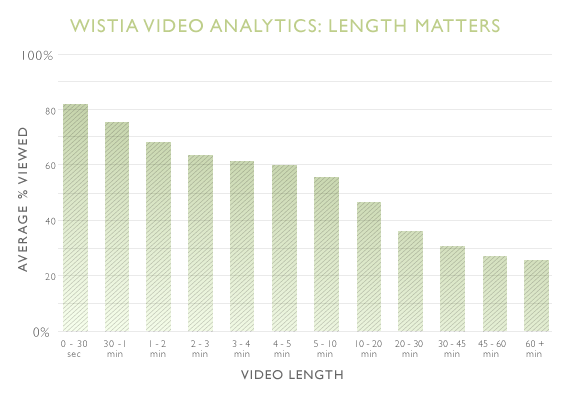
That’s where GIFs come in handy. Instead of creating a long 5-minute video to tell your brand’s story, you can capture the desired reaction in less than 10 seconds with a GIF. GIFs are like a mix of images and videos – they’re super short videos that loop over and over, and the best part is, they’re quick and easy to create, requiring much less time and effort.
Here’s a great example of a GIF ad we created for our AdWords Performance Grader:
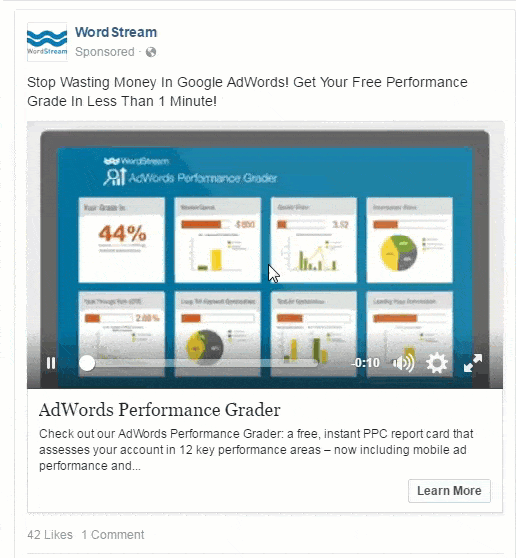
GIFs shine on mobile devices, and they’re a breeze to create. With user-friendly tools like GIPHY’s GIF Maker or more advanced ones like Snagit, you can effortlessly turn videos into shareable GIFs.
When it comes to Facebook GIF ads, the key is to keep them sleek and eye-catching. They should be subtle but attention-grabbing. Our expert, Allen Finn, goes into detail about why GIFs are a game-changer for your Facebook ads in his article ‘GIFs Will Revolutionize Your Facebook Ads
Step #6: Get More Leads with Facebook Lead Ads
Similar to Canvas ads, Facebook lead ads are designed exclusively for mobile devices. They were introduced to help advertisers avoid the hassle of directing potential customers to clunky mobile landing pages. Lead forms are excellent for collecting valuable data like names, job titles, phone numbers, addresses, and demographics – essentially any information that can help you market or retarget your products. What’s even better is that your lead form pops up right within the Facebook app, eliminating the need for your prospects to visit your website to provide this information.
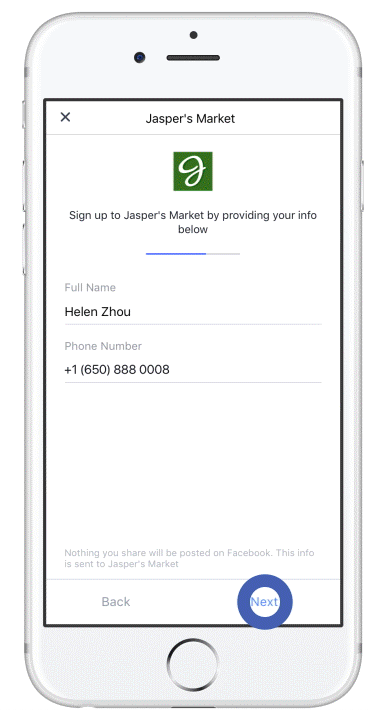
Lead ads are a win-win. They’re cost-effective, they work like a charm, and the contact info you gather becomes the fuel for building custom and lookalike remarketing audiences.
Your Facebook Ads Account
Step #7: Digging for Insights with Facebook Analytics
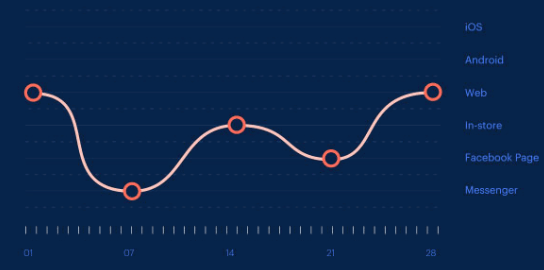
Facebook Analytics offers a treasure trove of features to track how your prospects and customers engage with your website, app, Facebook page, and more. But at the recent F8, Facebook’s annual developer conference, they unveiled some exciting additions to this already robust tool. Here are the key highlights:
- A new mobile app. Like Google Analytics, you can now review metrics from your paid social campaigns on your smart device.
- Auto-detected funnels. Use artificial intelligence to find recurring paths users take within your site or app.
- Custom insights. Add events within Facebook Analytics to generate custom insights.
Of course, no meaningful tracking can take place without the Facebook Pixel.
Facebook Pixel is like a secret code snippet. When you add it to your website’s pages, it works behind the scenes, keeping tabs on all the actions users take, like visiting your site, downloading content, or making purchases. It then connects the dots and shows you which of your ads led to these actions.
Step #8: Organize Your Account for Success
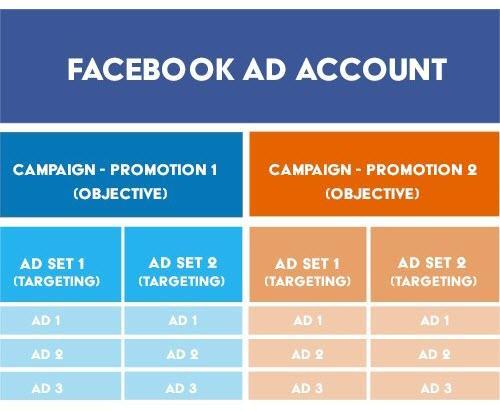
If you’re feeling confident about your AdWords expertise and believe it will seamlessly translate into success with Facebook ads, hold on a minute. AdWords and Facebook have distinct account structures with crucial differences. It’s essential to understand these variances to maximize your results on each platform.
Here’s a key distinction: Facebook budgets are managed at the ad set level, not the campaign level. This unique feature offers greater control over your spending on specific target audiences. To set yourself up for account structure success, follow our recommended recipe, which goes a little something like this:
- Choose a campaign based on your specific marketing objective. If you want to drive traffic to your homepage in addition to driving app installs, create two different campaigns.
- Break out ad sets based on refined targeting and budgeting.
- Cycle those ad sets through your existing campaigns to determine where your lowest cost-per-acquisition (CPA) lies.
Step #9: Don't Worry About a Limited Budget
You don’t need a massive budget to run a successful and efficient Facebook campaign; it’s all about making the most of what you have. When you’re working with limited funds, optimization becomes your best friend. To truly optimize your campaigns, you’ll need to become adept at using Google Analytics.
Brett McHale provides an excellent guide to small-budget Facebook advertising in his article ‘How to Create Killer Facebook Ad Campaigns with Your Existing Assets.’ In this resource, you’ll discover how to set up UTM parameters and custom conversion tracking, identify your most compelling on-site offer, and attribute results and data to specific ads. It’s a valuable resource for making every dollar count in your Facebook advertising efforts.
Facebook Audience Targeting
Step #10: Become a Pro at Facebook Remarketing
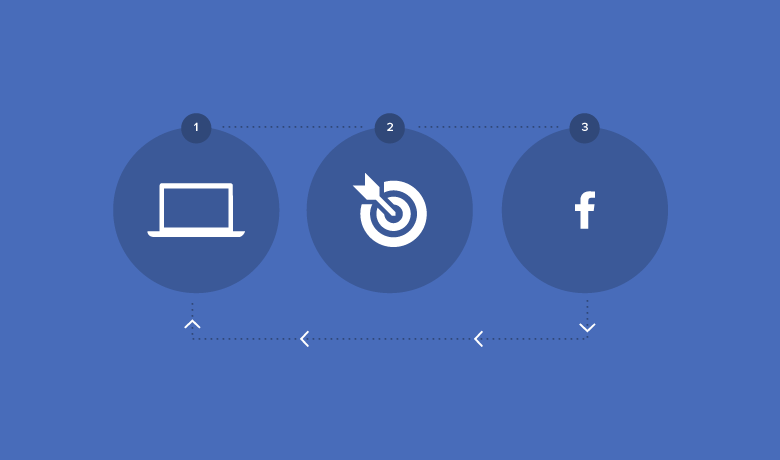
Remember that booze cruise offer or those stylish shoes that seem to follow you everywhere online? That’s the magic of remarketing. Remarketing is a highly effective strategy because it lets you target users who’ve already taken some action on your website or social accounts. This means you know how they’ve engaged with your brand in the past and where they are in the customer journey.
Step #11: Get to Know Custom Audiences
To truly grasp the nuances of Facebook remarketing, it’s essential to become skilled in using Custom Audiences. Custom Audiences provide you with the ability to target five distinct user segments:
- Customer File. Match email addresses, phone numbers, and Facebook user IDs to existing Facebook accounts and target those accounts.
- Website Traffic. Target people who have visited your website, or visited specific pages of your website.
- App Activity. Target people who have launched or interacted with your app or game.
- Offline Activity. Target people who have interacted with your business in-store, by phone, or through other offline channels.
- Engagement. Create a list of people who engage with your content on Facebook or Instagram.
Custom Audiences offer you a powerful tool to target your audience effectively. You can go beyond just showing ads to people who have interacted with your brand before by adding detailed behavioral, demographic, and interest targeting to each segment.
The key to successful Facebook remarketing lies in mastering Custom Audiences. For tips on optimizing your Custom Audiences and staying up-to-date with changes, keep an eye out for Facebook’s upcoming Custom Audiences permission tool, which is being introduced to comply with GDPR. This tool will require proof of consent before you can use Custom Audiences
Step #12: Experiment with Lookalike Audiences
Facebook Lookalike Audiences occupy the middle ground between layered targeting (which includes behaviors, interests, and demographics) and remarketing (using Custom Audiences). The concept of creating Lookalike Audiences involves using the data you’d typically employ to build Custom Audiences, but instead, you use it to form audiences that share similar characteristics with your existing customers. These potential customers haven’t yet engaged with your brand, but they closely resemble those who have.
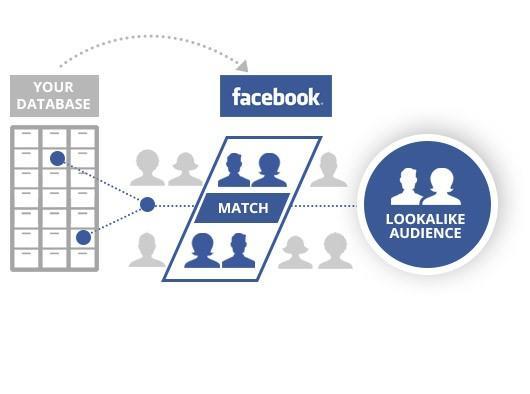
Step #13: Implement the Facebook Pixel
So, what exactly is the Facebook Pixel? Back in the good old days (around 2015), advertisers had to install multiple pixel codes on their websites to track various conversion metrics. Every new landing page for each promotion meant a new pixel had to be added, which worked fine for small campaigns but became a headache as ad strategies grew more complex. That’s where Facebook Pixel comes in.
Similar to Custom Audiences, Lookalike Audiences are most effective when used alongside layered targeting. Layering targeting onto Lookalike Audiences is particularly useful for controlling audience size. For example, if you’re concerned that your Lookalike Audience might not be well-qualified or is too large for your budget, you can adjust it with ease. Facebook even offers a sliding scale from 1 to 10 to manually increase audience size to fit your needs
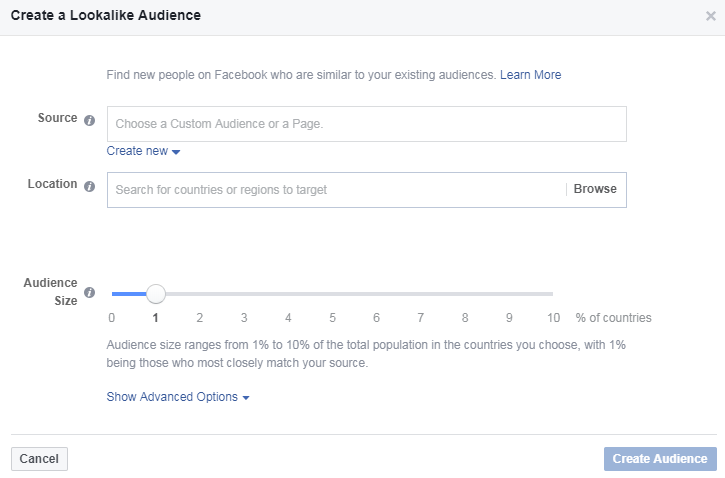
This approach allows you to build fresh audiences based on your initial, or ‘seed,’ audience. It’s a chance to connect with new prospects who may have evolved from your original lookalike audience but still share enough similarities to be worth targeting.
Step #14: Leverage Audience Insights for Audience Creation
The effectiveness of Audience Insights boils down to your ability to distinguish between average or below-average audiences (the ‘donkeys’) and high-performing audiences (the ‘unicorns’), as Larry Kim aptly puts it.
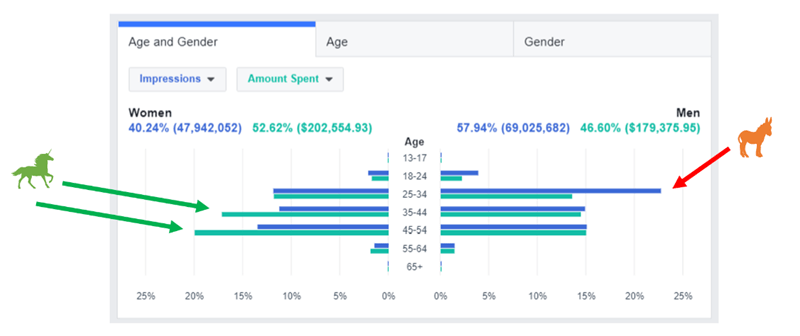
Audience Insights is a valuable tool that taps into a wealth of data sources. It combines self-reported Facebook user data (the information users provide in their profiles) with third-party data (details such as household income and purchasing behavior obtained from external partners) to help you create new target audiences. But where does this data come from exactly? Facebook offers three options: you can gain insights from all Facebook users, those connected to your Page, or an existing Custom Audience.
Once you’ve chosen your data source, similar to the Custom Audience setup process, it’s crucial to layer interests (including competitor pages) and behaviors on top of your audience to fine-tune your insights to the fullest
Step #15: Refining Your Facebook Targeting: Behaviors, Interests, and Demographics
If you’re a relatively new business with limited website traffic, your remarketing options might be limited. In such cases, your most effective approach would be manual or layered targeting. Manual targeting involves creating audiences based on:
- Behaviors—reach users based on purchase behaviors, intent, device usage, and more.
- Interests—reach users by looking at their interests, activities, the pages they liked, and closely-related topics.
- Demographics—reach users by location, age, gender, language, relationship status, and more.
The approach when crafting audiences with layered targeting is to begin with a broader audience and then progressively narrow it down to more qualified and refined subsets. Since you’re starting from square one, your Cost Per Acquisition (CPA) may be somewhat higher compared to remarketing to a custom audience. However, when executed correctly, layered targeting can be an efficient strategy to optimize your sales funnel.
Creating Effective Facebook Ads
Step #16: Become Acquainted with Size and Specification Requirements
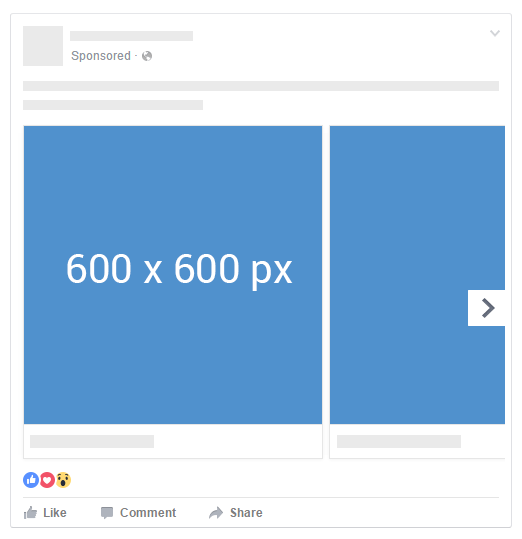
What’s more frustrating than discovering that your ad was cropped incorrectly because of incorrect specifications? Well, many things perhaps, but you should definitely avoid it. Here’s a brief overview of the ad specifications you should keep in mind:
- Image ads: Size: 1,200 X 628 pixels. Ratio: 1.91:1. Text: 90 characters.Headline: 25 characters. Link description: 30 characters.
- Video ads: Format: .mov or .mp4. Ratio: 16:9. Resolution: at least 720p. File size: 2.3 GB max.Thumbnail size: 1,200 x 675 pixels.Text: 90 characters. Headline: 25 characters. Link description: 30 characters.
- Carousel ads: Image size: 1,080 x 1,080 pixels. Image/video ratio: 1:1. Text: 90 characters. Headline: 40 characters. Link description: 20 characters.
- Slideshow ads: Size: 1,289 x 720 pixels. Ratio: 16:9, 1:1, or 2:3. Text: 90 characters. Headline: 25 characters. Link description: 30 characters.
Sticking to these specs will ensure that your ads display correctly.
Step #17: Create Relevant Facebook Ads
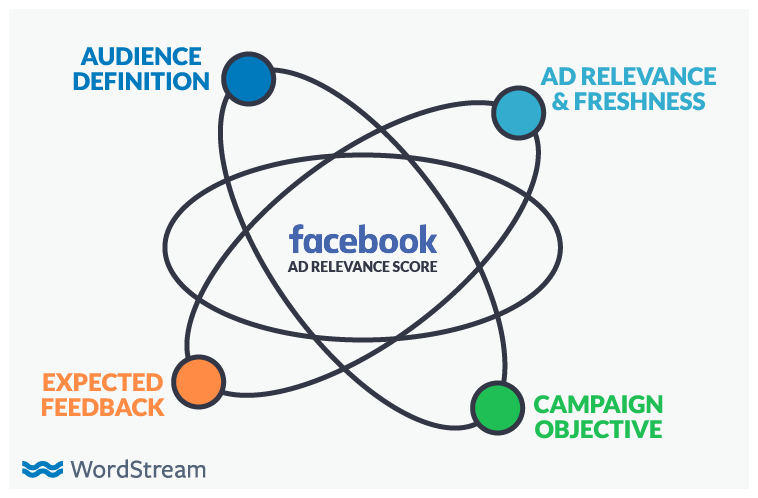
Facebook’s Relevance Score is a measure of how engaging and high-quality your ads are. It plays a crucial role because it impacts both your cost per click and the frequency at which Facebook displays your ad. Relevance Score is rated on a scale from 1 to 10, with 1 indicating a poor ad and 10 representing an excellent ad. The lower your relevance score, the less relevant your ad is to your audience, and the more you’ll need to spend to keep it in circulation.
Facebook assigns a relevance score after your ad has been shown to users more than 500 times. However, it’s important to note that this metric isn’t based on actual engagement but rather on Facebook’s prediction of how engaging your ad will be, considering your campaign objective and audience specificity. To boost your relevance score, focus on precise targeting, conduct testing, and, most importantly, create outstanding ads.
Step #18: Understanding the Variability in Facebook Ad Placements
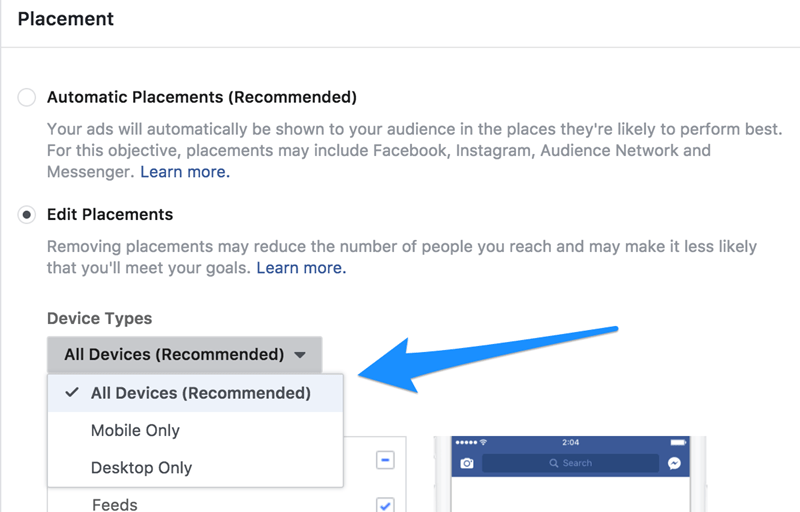
While novice Facebook advertisers may go for automatic ad placements, customizing where your ads appear can significantly influence your campaign’s success. You have the choice to run ads in four different locations on Facebook:
- Facebook’s mobile and desktop newsfeeds.
- Instagram.
- The Audience Network.
- Messenger.
Within these placements, you can further refine your targeting based on device types:
- Mobile only.
- Desktop only.
- All Devices.
Keep in mind that depending on your device choices, some Facebook ad placements may not be available. Additionally, certain placements work best when paired with specific campaign objectives, such as traffic campaigns or engagement campaigns.
Step #19: Stay Competitive: Match Your Competitors
In the world of Facebook advertising, it’s not always about achieving the lowest Cost Per Acquisition (CPA). You also need to be competitive. Our renowned Facebook Ad Benchmarks provide valuable insights to help you gauge how your performance compares to others in your industry.
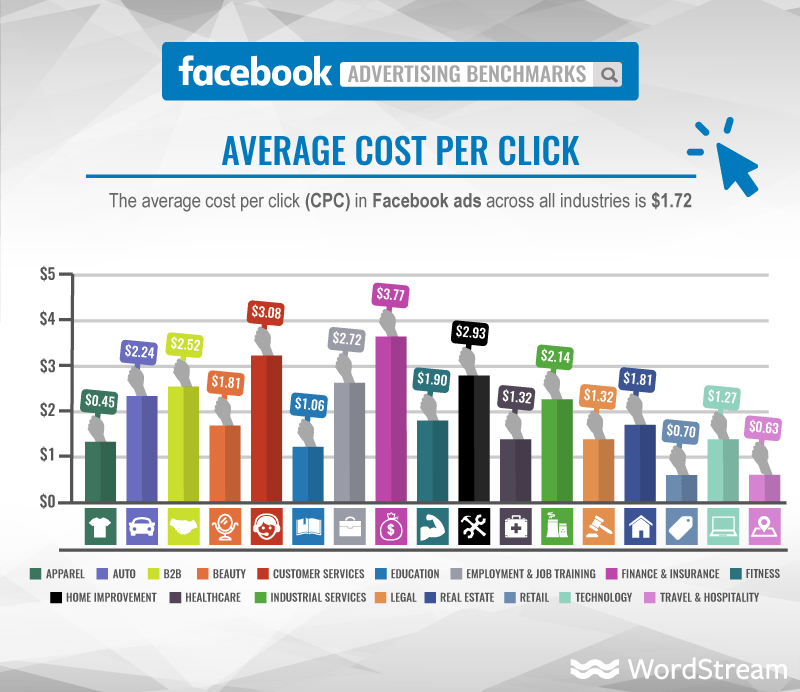
To provide you with meaningful benchmarks, we analyzed data from 256 accounts, which collectively represented $553,000 in Facebook spending, spanning across 18 diverse industries. We’ve gathered benchmarks for the following four essential metrics:
- Average Click-Through Rate (CTR) on Facebook by industry
- Average Cost per Click (CPC) on Facebook by industry
- Average Conversion Rate (CVR) on Facebook by industry
- Average Cost per Action (CPA) on Facebook by industry
Regardless of your industry, whether it’s Apparel, Education, Healthcare, or Real Estate, you can utilize the insights from our Facebook Ad Benchmarks to evaluate how your Facebook ad performance compares to that of your competitors.
Step #20: Be Wary of the GDPR

You’ve likely heard about the General Data Protection Regulation (GDPR) and its effective date of May 25, 2018. In light of recent data issues, Facebook has taken steps to address how it will comply with these new data regulations. Here’s what you should know:
- Ensure a legal basis (e.g., consent, contractual necessity, or legitimate interests) for using consumer data.
- Facebook won’t be held responsible for third-party companies unlawfully collecting data through its platform.
- Stricter regulations may be in store for the Facebook Pixel.
- If you’re running lead ads, you’ll need to link to your privacy policy to obtain real-time consent.
- Facebook is developing a Custom Audiences permission tool, requiring proof of consent before utilizing custom audiences.
Consent is a central theme. You must inform users on your site about what data you track, how you do it, and why—and they must agree to it. While it may sound straightforward in theory, the practical implementation can be more complex. To get the full details, check out ‘5 Ways the GDPR Will Impact Your Facebook Ads.
That's a Wrap!
Whew! Quiteeee a few Facebook advertising tips we packed in there. If you have any questions about these tips or the linked resources, or if you’d like to suggest an additional tip, please feel free to leave a comment below. If you’re ready to launch your Facebook ads or give your current strategy a makeover, give our Facebook Ads Checklist a try to ensure you’re all set before clicking ‘go.’ Happy Facebook advertising!”




